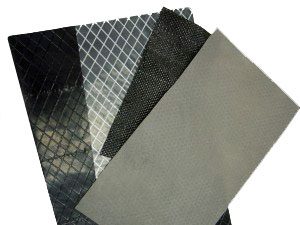Breathable vs Non-breathable Covers
There are two major categories of greens covers to choose from: Non-breathable solid plastic covers or breathable woven covers. Which is best? That depends on your location, grass type and application.
Non-Breathable Solid Plastic Covers
Black or clear? Some superintendents prefer the extra heat that a black cover attracts during the day; others prefer the sunlight that can pass through a clear cover. Best ones are typically scrim reinforced to provide tensile strength.

Advantages
- Temperature under the cover will actually increase by several degrees overnight in addition to reducing desiccation
- Provides the most protection for warm season grasses against low temperature kill
- Lightweight
- Typically slightly lower in cost than fabric covers
Disadvantages
- Cannot irrigate once the cover is in place
- Can be difficult to put out during heavy winds
- Must be removed every three or four days
- More likely to develop disease after prolonged use
Breathable Fabric Covers
 Type: Woven
Type: Woven
-
These materials have the fibers placed at 90 degree angles
-
Has the appearance of a “rice” bag
-
Typically made from polypropylene
-
Does not accumulate as much moisture or debris as the non-woven
-
Tends to pull apart if the material is cut
Type: Non Woven
- Thicker fabrics that look like felt and are needle punched
-
Thinner materials are typically some type of heat set process
- Typically made from either polypropylene or polyester
- The polyester materials have better UV resistance, but even they are subject to deterioration after a few years
Advantages
-
Can remain in place for a long period of time
-
Can irrigate while the cover is in place
-
Prevents kill by reducing desiccation
-
Easier to handle in heavy winds
Disadvantages
-
The temperature is not actually increased under the cover
-
Non-wovens tend to pick up moisture and debris such as leaves, twigs, etc.
-
Non-wovens tend to rot if they are stored with moisture

